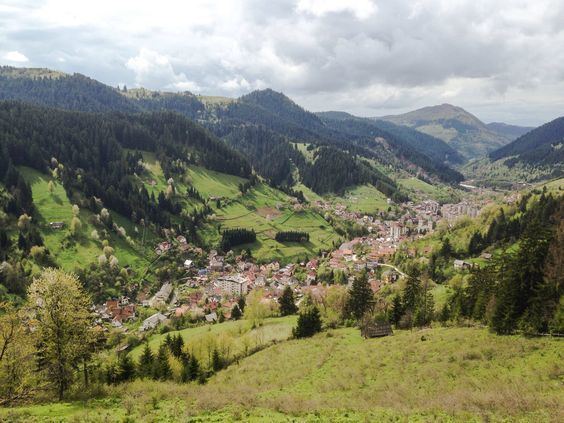Area code(s) +387 32 Area 390 km² | Time zone CET (UTC+1) Local time Saturday 1:23 PM | |
 | ||
Weather 19°C, Wind SW at 10 km/h, 27% Humidity | ||
Bosnian road r 444 01 vare town breza town
Vareš is a town and municipality in central Bosnia and Herzegovina, famous for the local mining activities and production of iron. It is part of the Zenica-Doboj Canton and the Federation of Bosnia and Herzegovina.
Contents
- Bosnian road r 444 01 vare town breza town
- Map of VareC5A1 Bosnia and Herzegovina
- Apartments baba luce vare bosnia and herzegovina hd review
- Early history
- Middle ages
- Medieval
- Austro Hungarian Empire
- World War I
- World War II
- Bosnian War 199295
- Geography
- 1971
- 1991
- Tourism
- Places in the municipality
- List of mayors
- Notable people
- References
Map of Vare%C5%A1, Bosnia and Herzegovina
Apartments baba luce vare bosnia and herzegovina hd review
Early history
The town of Vareš has a long history with remains of metallurgical activities dating back to Bronze Age. Also during the Roman era, the town was famous for its miners and smiths.
Middle ages
During Middle Ages the Bosnian kings had their center in close proximity of the modern city of Vareš. Bosnia's greatest king, Tvrtko, considered the Vareš' village Duboštica for the center of his kingdom, since it was the mining center of his country.
Medieval
The remains of the medieval royal city and castle Bobovac were recently proclaimed as national monuments, as was the Catholic Church of St. Michael in the town of Vareš. Oldest preserved Catholic church in Bosnia can be found in the town, built in early 17th century. The town was earlier dominated by Catholic population. The church books are among the oldest preserved in Bosnia and date back to 1643.
Austro-Hungarian Empire
During the Austrian rule of Bosnia and Herzegovina the iron-works of Vareš were an important exporter of various iron products to the rest of the Habsburg empire. In 1891, the first blast furnace in Bosnia and Herzegovina was built there. That blast furnace still exists, but it ceased its operations in 1990.
World War I
In the 1910s World War I, men of the town were subject to draft, and served in the regiment BH-1, formally based in Sarajevo. They mostly saw action in the Italian and Galician fronts. It should be noted that the church bell was taken and melted so it could be used to produce war material.
World War II
During the Second World War, Vareš was an Ustashe stronghold. Due to the value of its industry the city was well defended, and saw several attacks by Partisans and Chetniks on both the city and surrounding villages.
Bosnian War (1992–95)
In the Bosnian War that lasted from early 1992 until December 1995, the town of Vareš was at first controlled by the Croatian Defence Council (HVO), while the rest of the municipality was divided between the forces of Army of the Republic of Bosnia and Herzegovina (ARBih) and Army of Republika Srpska. In November 1993, the Army of the Republic of Bosnia and Herzegovina took over the town, while the Croat civilian population fled, before the ARBiH arrived, through Serb lines to Kiseljak. The remaining HVO units took hold in the village of Daštansko, where they remained until the Dayton Agreement was signed in November 1995. In 1994, the village of Brgule fell to the Army of the Republic of Bosnia and Herzegovina. Before, it vas VRS's territory. Small part of the Croat population from Vareš returned in 1995, those who have not returned have mostly emigrated to West European countries, with a significant number settling in Knin, Croatia.
Geography
Vareš is a mountainous town located 45 km from Sarajevo in the valley of the small Stavnja River 828 m above sea level surrounded by the massive high Kapija, Stijene, Zvijezda and Perun Mountains, named after Perun / Перун, the highest god of the Slavic pantheon (Perkūnas/Perkons). The town is rich with archeological findings from different epochs – on several surrounding locations are found remains of prehistorical period, such as copper artifacts in Brgula.
In the town center itself, there is an old stone bridge that resembles to the majority of one arched bridges from Ottoman period. This bridge is considered to be similar by the building method to the Old Bridge in Mostar.
1971
23,523 total
1991
22,203 total
The town of Vareš had a total population of 5,888, composed of:
Tourism
The Vareš region also has possibilities for winter tourism development. Due to its position and elevation snow stays longer than in other regions, and the beautiful areas surrounding it are really good for skiing and skating. The mountain resort Doli is located on Zvijezda Mountain.
Places in the municipality
Bijelo Borje, Blaža, Borovica Donja, Borovica Gornja, Borovičke Njive, Brda, Brezik, Brgule, Budoželje, Čamovine, Ćeće, Dabravine, Daštansko, Debela Međa, Diknjići, Dragovići, Draževići, Duboštica, Hodžići, Ivančevo, Javornik, Kadarići, Karići, Kokoščići, Kolovići, Kopališta, Kopijari, Krčevine, Kunosići, Letevci, Ligatići, Luke, Ljepovići, Mijakovići, Mir, Mižnovići, Mlakve, Naseoci, Neprivaj, Oćevija, Okruglica, Orah, Osoje, Osredak, Ostrlja, Pajtov Han, Pajtovići, Planinica, Pobilje, Podjavor, Pogar, Položac, Poljanice, Pomenići, Pržići, Pržići Kolonija, Radonjići, Radoševići, Ravne, Rokoč, Samari, Semizova Ponikva, Seoci, Sjenokos, Slavin, Sršljenci, Strica, Striježevo, Stupni Do, Šikulje, Tisovci, Toljenak, Tribija, Vareš, Vareš Majdan, Vijaka Donja, Vijaka Gornja, Višnjići, Zabrezje, Zaruđe, Zubeta, Zvijezda, Žalja i Žižci.
